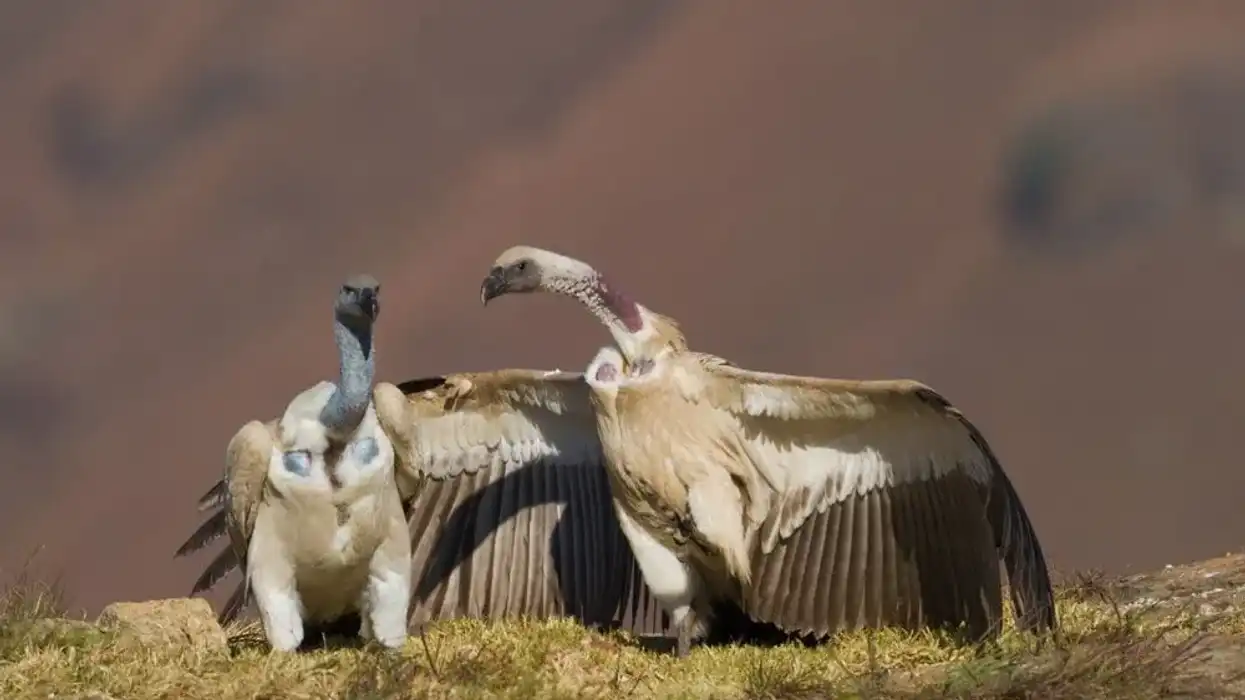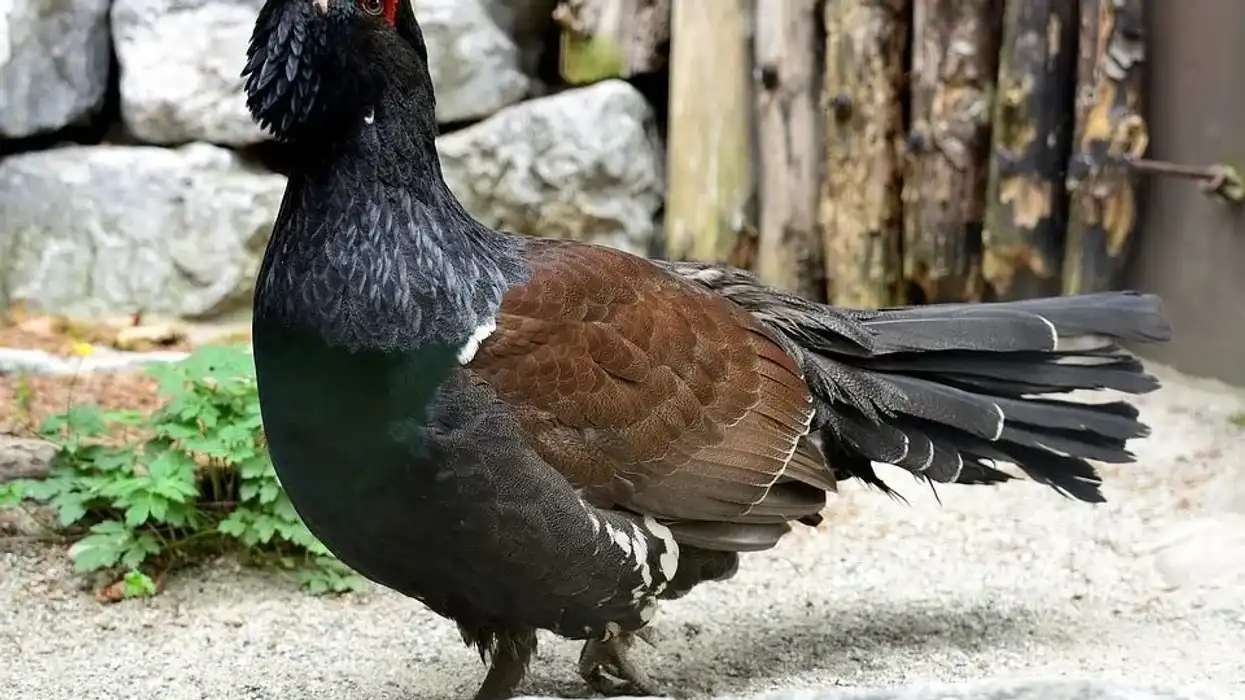The Cape crows, Corvus capensis, are a non-migratory species of crows mostly found in East and South Africa. Their distribution is mainly focused on Angola, Zimbabwe, Botswana, Tanzania, Kenya, and Namibia. They are named so because they are mostly indigenous to South Africa or the Cape of Africa.
The Cape crow, Corvus capensis, has a glossy black coat on its head, legs, bill, wings, tail, and eyes. The northern population is said to be smaller than the southern black crow.
The Cape crow belongs to the Passeriformes order, family Corvidae and Corvus genus. The Corvus capensis, Cape crow, lives most of its life in a habitat that has scattered trees. This includes grassland, savannah, farmlands, plantations, or arid shrublands.
This Cape crow, Corvus capensis, is on the larger side. The diet of this bird includes seeds, fruits, frogs, insects, and small birds.
The Cape crow, Corvus capensis, can feed or forage by mainly staying on the ground. They can be found in small flocks or pairs as well as alone. During the breeding season, the nest is made by both male and female birds high up on poles or trees.
The female Cape crow, Corvus capensis, lays three to four eggs and both parents take turns incubating the crow eggs. The family stays together until the babies turn into fledglings.
Scroll down to read about this amazing Cape crow and enjoy facts that you will not forget! If you like reading about the Cape crow, you can also check out facts about the flamingo and the dove as well.
Cape Crow Interesting Facts
What type of animal is a Cape crow?
The Cape crow, Corvus capensis, is a species of crow found in southern and eastern Africa. It mainly forages by pecking or walking on the ground.
What class of animal does a Cape crow belong to?
The Cape crow, Corvus capensis, belongs to the class of bird from the Corvidae family, genus Corvus.
How many Cape crows are there in the world?
The exact population of the Cape crow, Corvus capensis, species is unknown. However, the distribution range is of this bird is very vast and their population trend is increasing.
Where does a Cape crow live?
The Cape crow, Corvus capensis, lives in open savannahs of East and South Africa. They are usually found in Angola, Zimbabwe, Botswana, Tanzania, Kenya, and Namibia.
What is a Cape crow's habitat?
The Cape crow, Corvus capensis, prefers inhabiting a variety of habitats including open savannahs with scattered trees, woodlands, grasslands, arid shrubland, farmlands, and plantations.
Who do Cape crows live with?
The Cape crow, Corvus capensis, is mainly solitary but can form small flocks for foraging. This species is mainly seen in pairs during the breeding season.
How long does a Cape crow live?
The exact lifespan of a Cape crow, Corvus capensis, is unknown. However, studies show that most crow species can live for up to 20 years in the wild.
How do they reproduce?
The Cape crows, Corvus capensis, are usually monogamous bird species. The females build nests while male collects materials like twigs, branches, feathers, wool or cloth.
This bird prefers building nests in high habitats like trees or poles. One clutch has a range of three to four eggs and both parents take turns incubating for 18-19 days.
Mostly three chicks will survive and be taken care of by the parent bird. The Cape crow, Corvus capensis' family stays together and the hatched chicks turn into fledglings in 30-40 days after birth.
What is their conservation status?
The conservation status of the Cape crow, Corvus capensis, is Least Concern. This bird species do not have any immediate threats and live in protected areas.
Cape Crow Fun Facts
What do Cape crows look like?
The Cape crows, Corvus capensis, are uniformly black and are on the slightly larger side. Their whole body, including head, tail, bill, legs, and throat feathers, is black. The plumage is glossy and is unique to its habitat or a particular region.
How cute are they?
The Cape crow, Corvus capensis, looks like most other crow species and does not look particularly striking. If you like crows, you will definitely find the Cape crow adorable. If not, then they are just average like most other crows.
How do they communicate?
The Cape crow, Corvus capensis, can communicate using a variety of sounds or calls. Their voice is very loud and can travel large distances. Some studies show that this crow species can also mimic or mock sounds. The Cape crow, Corvus capensis, can also communicate using body language or feather displays.
How big is a Cape crow?
The average Cape crow, Corvus capensis, can range from 18.8-19.6 in (48–50 cm) in length. They are bigger than the carrion crow and up to five times the size of an average hummingbird.
How fast can a cape crow fly?
There is no data that has estimated the flying speed of a Cape crow, Corvus capensis, species.
How much does a Cape crow weigh?
The weight of a Cape crow, Corvus capensis, is about 14-25 oz (410-697 g).
What are the male and female names of the species?
There are no male and female names for the Cape crows. Since both genders look the same, it can be difficult to differentiate between the two.
What would you call a baby Cape crow?
A baby Cape crow can be called a chick or a fledgling.
What do they eat?
The Cape crows, Corvus capensis, are mainly omnivores and their diet includes grains or invertebrates. They can feed on seeds, fruits, frogs, insects, and small birds. The Cape crow, Corvus capensis, feeds by walking on the ground and pecking or searching for food. The main predators of crows can range from raccoons, eagles, owls to hawks and snakes.
Are they dangerous?
The Cape black crows, Corvus capensis, are not dangerous and rarely interfere with humans.
Would they make a good pet?
As these crows are birds that prefer being free, it's not a good pet choice. It is not easy to get used to domestic life with a wild bird, both for the owner and the black crow. The Cape crow, Corvus capensis, is better left staying in the wild with their kind.
Did you know...
The great spotted cuckoo is one of the main hosts of the Cape crow nest. Studies estimate that 10% of the Cape crow, Corvus capensis' nests have been parasitized.
The African pied crow is considered to be the most intelligent animal and can even talk or mimic sounds.
A medium-sized crow will have an average length of around 15.7 in (40 cm) and will weigh 8.6-13 oz (245-371 g). Some related crows include the rook which weighs 12-18.7 oz (340-530 g), the American crow that weighs 11.3-21.9 oz (320-620 g) and the white-necked raven can weigh up to 22.9 oz (650 g).
The Cape crow is considered to be on the larger side and weighs 14-25 oz (410-697 g).
The name of crow comes from the Latin word 'corvus' which means 'raven' and is part of the genus name as well.
Due to a genetic disease, some crows are called white crows. They suffer from leucistic or more commonly known as genetic partial albinism. You can tell if a white bird is actually a crow by checking if members of their groups are normal and black crows.
Are crows indigenous to South Africa?
Yes, the Cape crow is endemic to South Africa. The Cape crow, Corvus capensis, can be found in Angola, Zimbabwe, Botswana, Tanzania, Kenya, and Namibia.
How much weight can a crow carry?
An average crow can carry 1.5 lb (680 g). The large-billed crows can carry weight 1.5 times the size of their body that weighs about 2.4 lb (1100 g).
Here at Kidadl, we have carefully created lots of interesting family-friendly animal facts for everyone to discover! Learn more about some other birds from our gray catbird facts and hairy woodpecker facts pages.
You can even occupy yourself at home by coloring in one of our free printable cape crow coloring pages.










